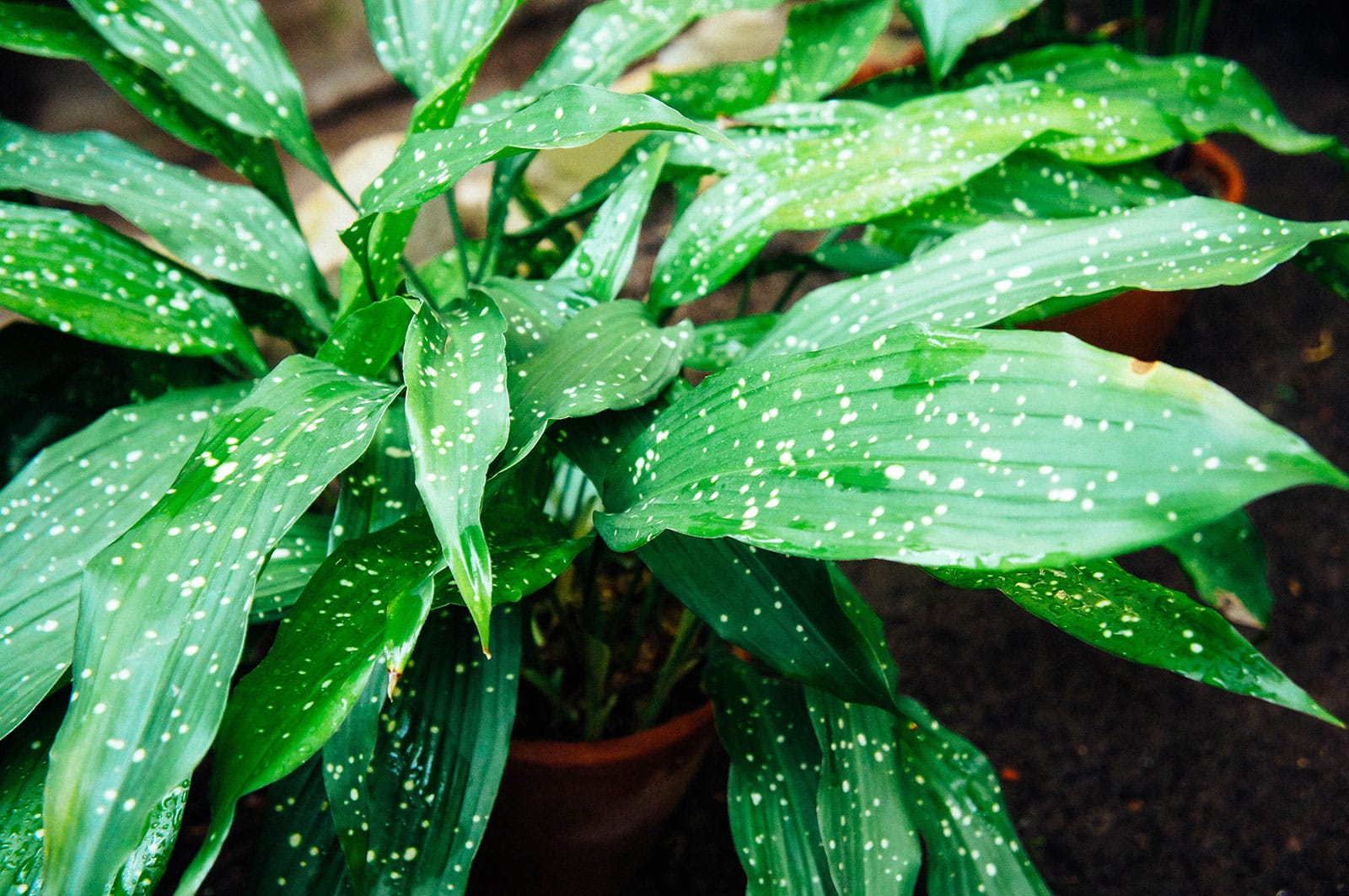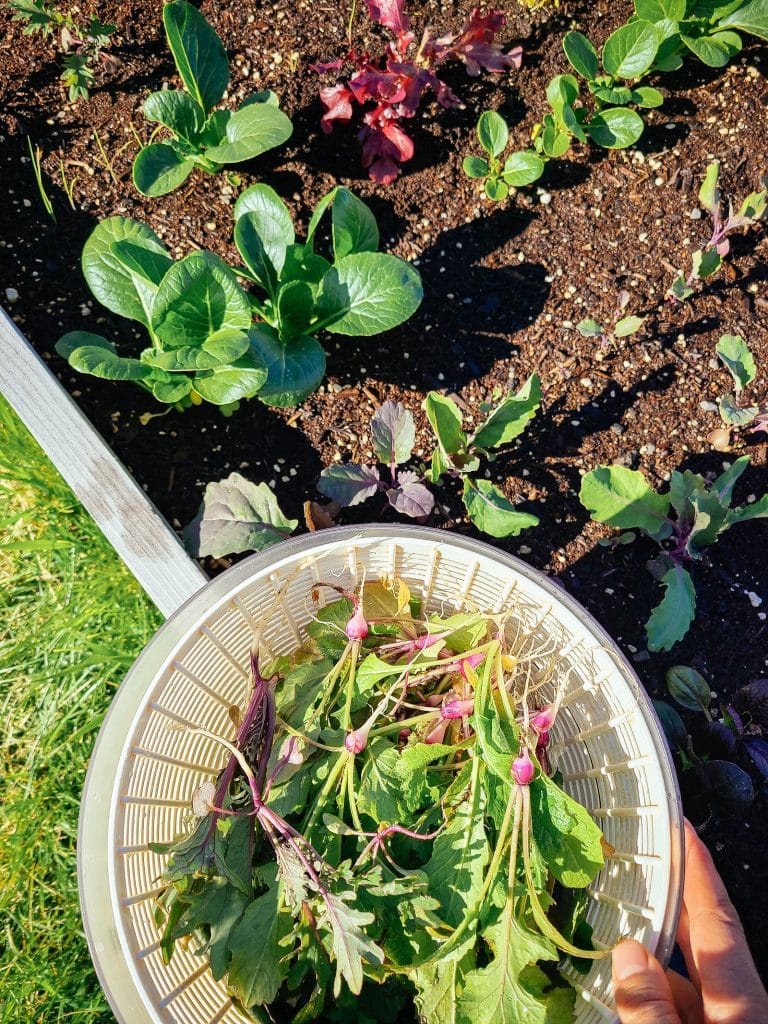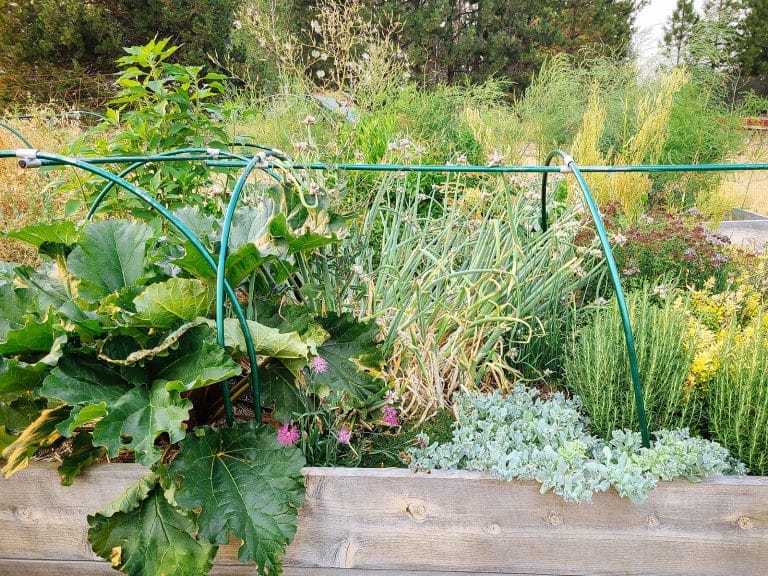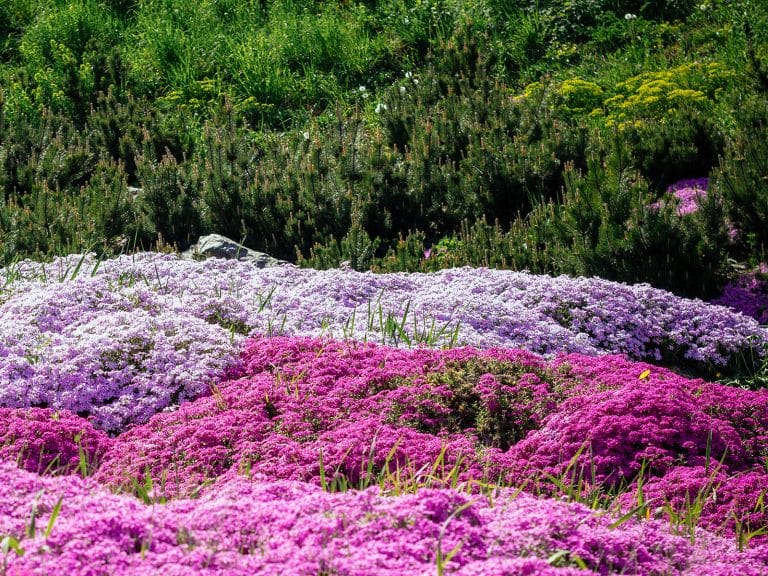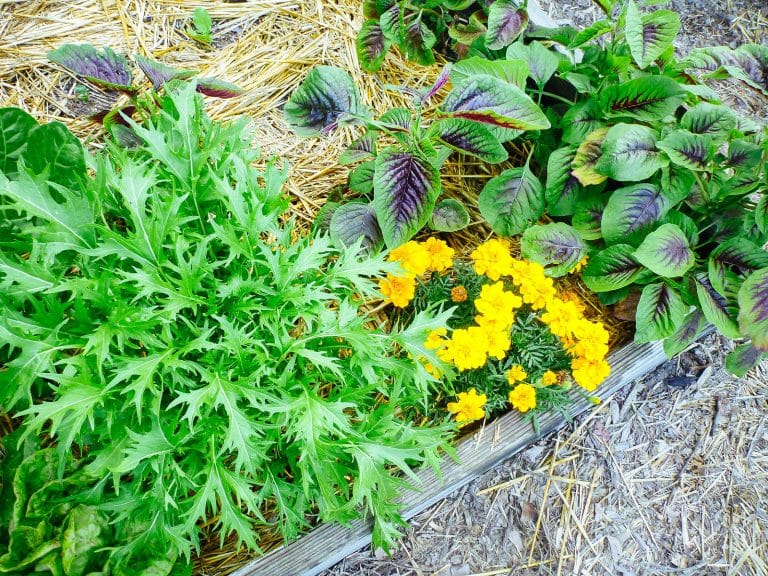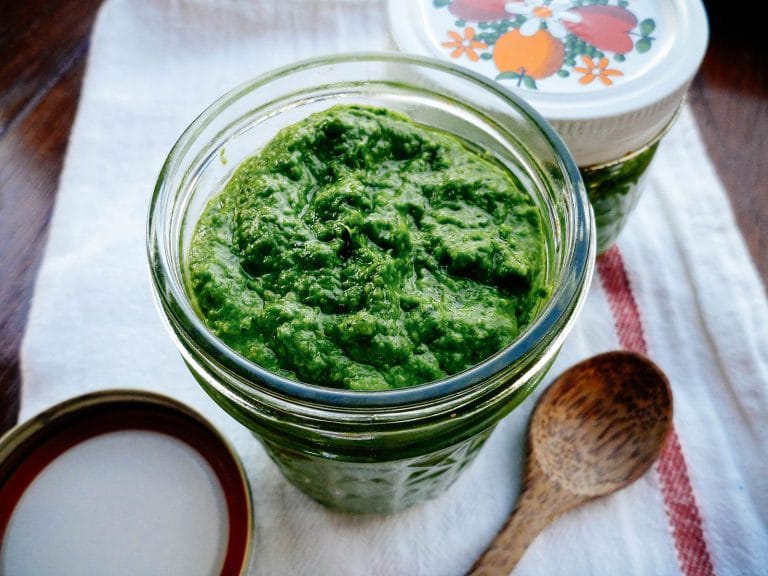Want to spruce up your home with a nice houseplant, but worried you’ve got a black thumb? Or maybe your place doesn’t get much natural light?
Fear not: you can still have plants. You just have to go for a forgiving, low light-proof species. Luckily, today’s subject is just that!
Meet Aspidistra, better known as the cast iron plant.
Below, we’ll discuss everything you need to know about keeping an indoor cast iron plant alive. Hint: it’s super easy!
| Common name(s) | Cast iron plant, bar room plant |
| Scientific name | Aspidistra sp. |
| Family | Asparagaceae |
| Height and spread | 3 1/2 feet height and width |
| Light | Bright indirect light |
| Soil type | Well-draining, rich, slightly acidic |
| Water | Let the top of the soil dry out |
Disclosure: If you shop from my article or make a purchase through one of my links, I may receive commissions on some of the products I recommend.
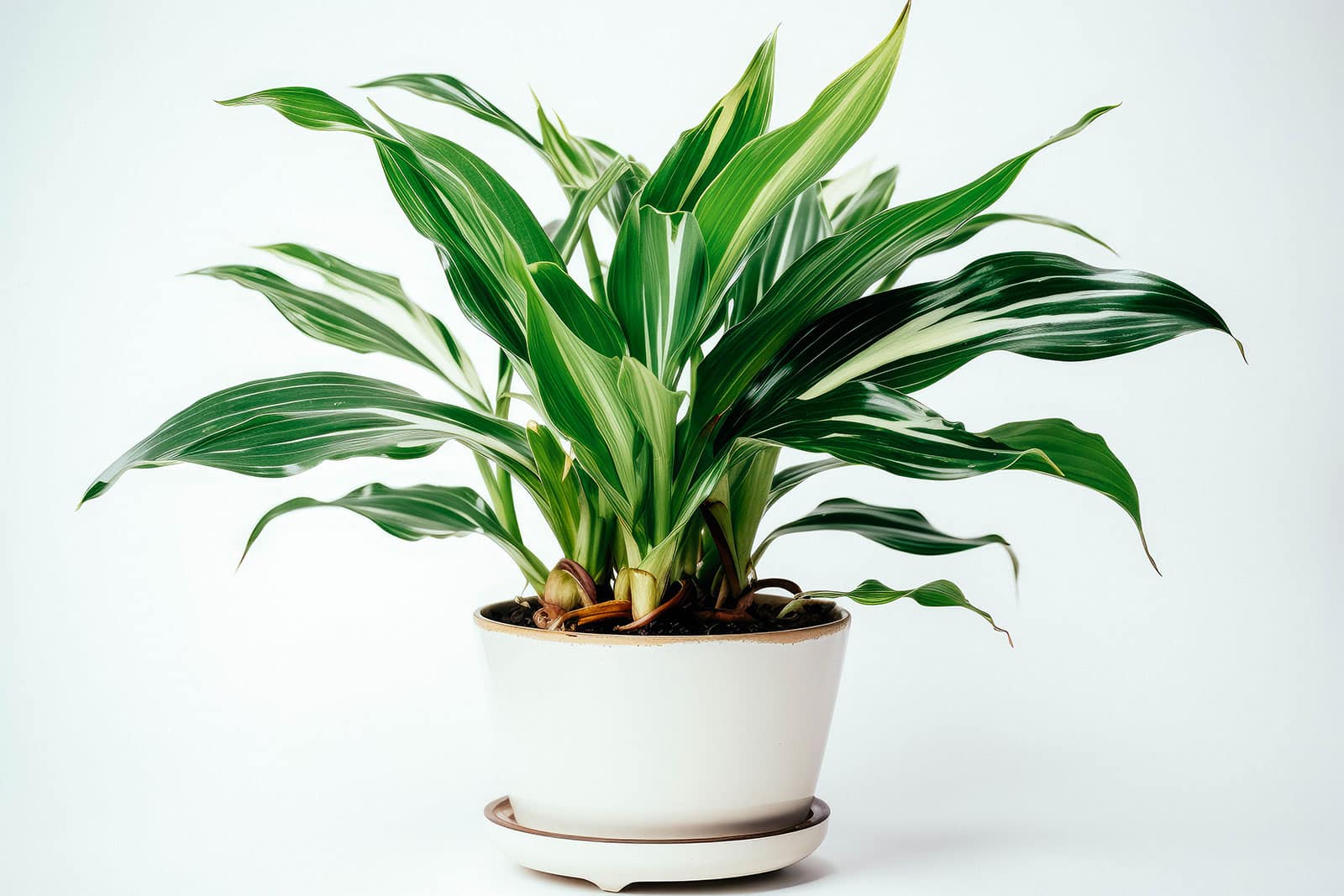
About the cast iron plant
Description
You’ve probably seen a cast iron plant before. Although they don’t seem to be quite as popular as they once were, particularly in the 1970s, they’re still commonly displayed in stores and offices.
The term “cast iron plant” applies to all of the species (almost 100 as of now) in the genus Aspidistra. One of them is way more common in the houseplant world than the others, though, so it’s kind of considered the “official” cast iron plant: Aspidistra elatior.
A. elatior and its cousins are all similar in looks. You can recognize these perennials by their clumping growth pattern and elongated, sword-shaped foliage. The leaves, which sprout directly from the ground, are usually dark green and glossy, although some species feature speckled foliage.
Aspidistras grow from central rhizomes. They can reach up to 3 1/2 feet in height and width, making them a great choice if you’re looking for a larger plant that can serve as a nice centerpiece.
Did you know?
Cast iron plant leaves are commonly used in floristry. A product called Aspidistra leaf ribbon, made of cast iron plant leaves cut into long strips, is popular for tying together floral arrangements and for gift wrapping.
Natural habitat
All cast iron plants are naturally found in (south)eastern Asia. Many species are from China and Vietnam. However, the most commonly grown species in the genus, Aspidistra elatior, hails from southern Japan.
In their natural habitat, cast iron plants form part of the forest understory. The climate tends to be subtropical and prone to plenty of rainfall.

Cast iron plant varieties
One thing I’ve never really understood when it comes to cast iron plants is why the many interesting cultivars out there aren’t more popular. At least around here, my local plant shops and garden centers will only ever carry the regular green version.
A pity, because there’s much more to Aspidistra!
Luckily, online stores and Etsy sellers (I’ve linked my favorites just below this section) sometimes offer a bit more variety. This especially applies to the “original” cast iron plant, Aspidistra elatior.
If you’d like a more unique A. elatior, try looking for these:
- Aspidistra elatior ‘Akebono’ (or ‘Zebra’): Subtle yellow striping on the leaves.
- Aspidistra elatior ‘Variegata’: Beautiful cream-colored bands of variegation.
- Aspidistra elatior ‘Okame’: Sometimes considered just a synonym for ‘Variegata’, but other growers insist this one is smaller and more compact.
- Aspidistra elatior ‘Asahi’: My favorite! The name means “morning sun”. The tops of the leaves are cream in color, fading to green in the lower parts.
- Aspidistra elatior ‘Akebono’: With a yellowish stripe down the middle of the leaf.
- Aspidistra elatior ‘Lennon’s Song’: Also has a yellow central stripe, but it’s a bit more irregular.
- Aspidistra elatior ‘Hoshi Zora’: Very subtle, tiny speckles all over the leaves. The name means “starry sky.”
- Aspidistra elatior ‘Ippin’: Similar to ‘Okame’, with pretty cream bands.
None of the other species in the genus Aspidistra are quite as popular as Aspidistra elatior, but you may come across them for sale if you’re lucky.
Here are a few of the more common ones:
- Aspidistra grandiflora: Known for its speckled leaves, particularly a cultivar called ‘Big Spotty’.
- Aspidistra lurida: Actually the type species for the genus. Particularly known for a cultivar called ‘Ginga’, which is commonly incorrectly called A. eliator ‘Milky Way’.
- Aspidistra caespitosa: Much more elongated leaves. Known for a cultivar called ‘Jade Ribbons’.
- Aspidistra sichuanensis: Long, speckled leaves. Known for a cultivar called ‘Spek-tacular’.
- Aspidistra yingjiangensis: Again, speckles! Known for a cultivar called ‘Singapore Sling’.
If you’re looking for more obscure Aspidistras, you can always check out the Royal Horticultural Society website. They have a pretty good overview of all the cultivars.
where to buy
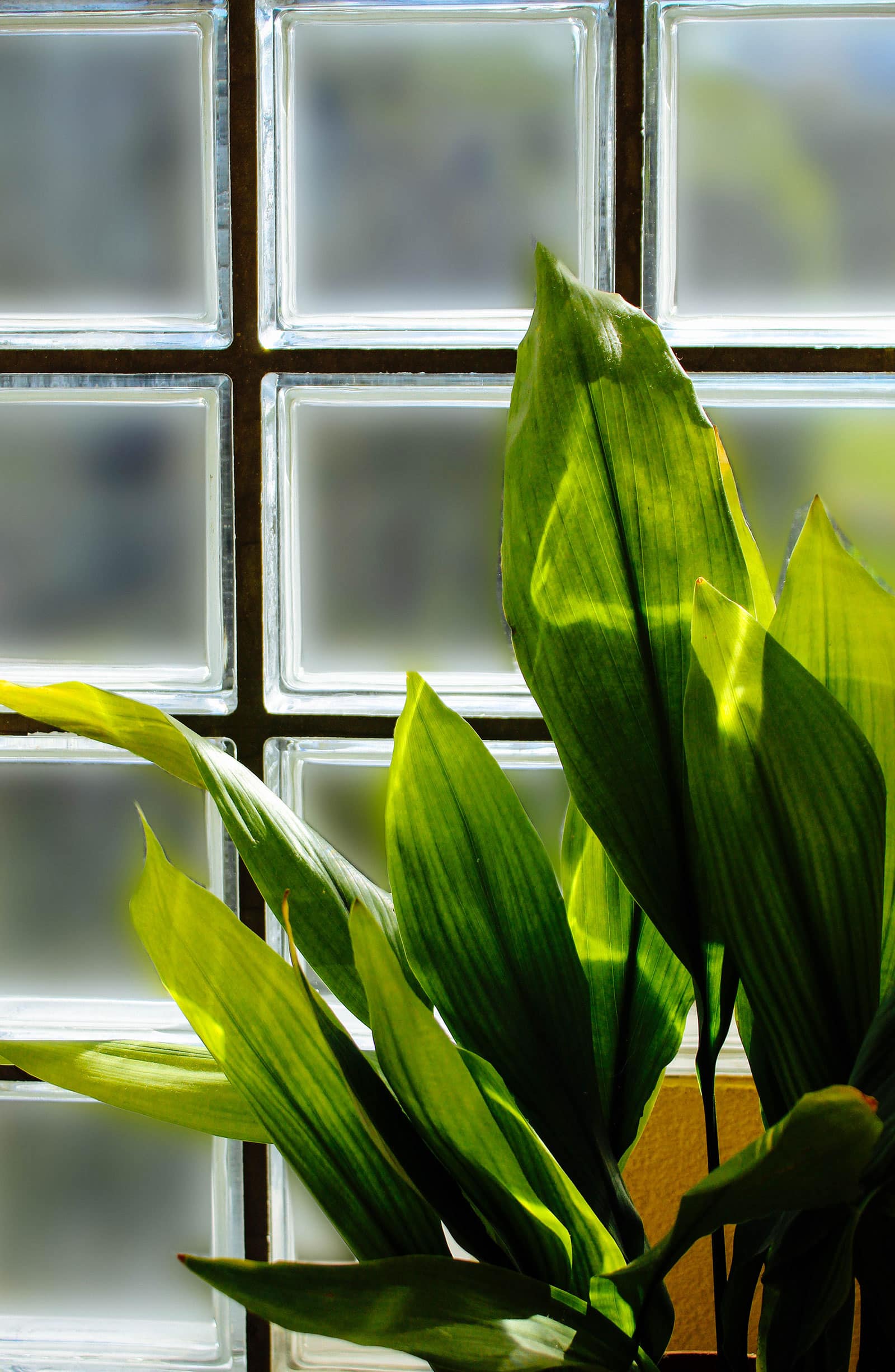
Caring for a cast iron plant
Light and temperature
If you’d like to grow a cast iron plant, it’s important to keep in mind that this species naturally forms part of the forest understory. It hasn’t evolved to be able to withstand lots of sun, so you’re best off placing yours in a spot in your home that gets bright indirect light.
If you don’t mind your plant not growing much, you can also go lower than “bright indirect” in terms of light levels.
Aspidistra is on my list of low-light houseplants for a reason: although it can’t be grown in full dark, it can make do with a lot less than most other houseplants.
Placing your cast iron up to 10 feet away from a window should be fine in most cases. For those with a light meter (an inexpensive model like this one works great inside the house), you’re looking for at least around 100 foot-candles (about 1,076 lux).
In terms of temperature, this species is equally unfussy. Unlike most of our favorite houseplants (such as Philodendrons, Alocasias, and Aglaonemas), it naturally grows in subtropical rather than tropical climates, meaning it isn’t quite as sensitive to low temps. A great choice for those draftier windowsills!
Aspidistras can reportedly handle light frost (down to around 23°F/-5 °C). This means that in some climates, you’ll be able to grow yours outdoors year-round without having to bring it in for winter. Do keep in mind that you should keep the plant dry to prevent frost damage.
All this being said, you’ll see the best growth at 50°F/10°C or higher. Summer heat is not a problem as long as your cast iron plant isn’t suddenly exposed to lots of sun, which can result in burned leaves.
Soil and planting
Your cast iron plant will probably do well in pretty much any soil type: just some regular houseplant soil with a handful of perlite mixed in for drainage should work like a charm.
For an ideal mixture, though, you could consider also mixing in some compost or worm castings. This adds richness and organic nutrients.
Peat moss works to make the soil slightly acidic, which this species likes, but it has fallen out of fashion because it’s not a renewable resource.
Any planter is fine for your Aspidistra as long as it has a drainage hole in the bottom.
This is a slow-growing plant, so you probably won’t have to repot often, but it’s still a good idea to refresh the soil every two years or so even if the plant hasn’t outgrown its pot yet. If it does need more space, you can go up one pot size next spring.
Recommend products for growing cast iron plants:
- Good Earth Organics Premium Potting Soil
- Perfect Plants Organic Perlite
- Wiggle Worm Pure Organic Worm Castings
Water and humidity
Cast iron plants are often noted to require very little water, but this isn’t entirely true. The amount of water they need really depends on the amount of light they get, as well as factors like temperature. It’s true that most houseplants end up being watered to death, so don’t overdo it!
A cast iron plant grown in a very shaded spot, which is what most people prefer for these hardy plants, will indeed rarely need a drink. It won’t grow as quickly, so it simply doesn’t use as much water.
Let the soil dry out halfway or so before watering again if this is the case with your plant, otherwise you’ll risk drowning it and causing root rot.
It’s different if your Aspidistra is right next to a bright window, especially during the warm summer growing months. You may have to water every few days in order to keep the soil lightly moist.
As for humidity, don’t even worry about it. Sure, given that it naturally grows on moist forest floors, this plant does like high humidity—but it grows just fine in drier spaces as well.
Fertilizing
Because they’re slow growers, Aspidistras are not big feeders.
During the growing season, you can apply some diluted liquid houseplant food every month or so. Don’t fertilize during winter or if your plant isn’t doing well.
Recommended fertilizers for cast iron plants:
- Elm Dirt Plant Juice Organic Fertilizer
- Houseplant Resource Center Liquid Fertilizer for Houseplants
- Leaves & Soul Professional Snake Plant Fertilizer
Pruning
Your cast iron plant is unlikely to ever need much in the way of pruning. Old leaves can yellow and eventually crisp up, at which point you can remove them.
If the plant is becoming too large, you’re better off following my division guidelines below.
Dividing or repotting
As I mentioned, it’ll probably be a while before your cast iron plant outgrows its planter. If yours has, congrats! You must be doing something right.
Now what should you do? Go up a pot size?
If you want a nice and big plant, then yes, you’re best off keeping the whole thing together and repotting it into a larger planter. If you’d rather keep the same planter, though, that also works.
Because Aspidistras are rhizomatous, they’re ideal candidates for division. I’ll describe how to do it below.
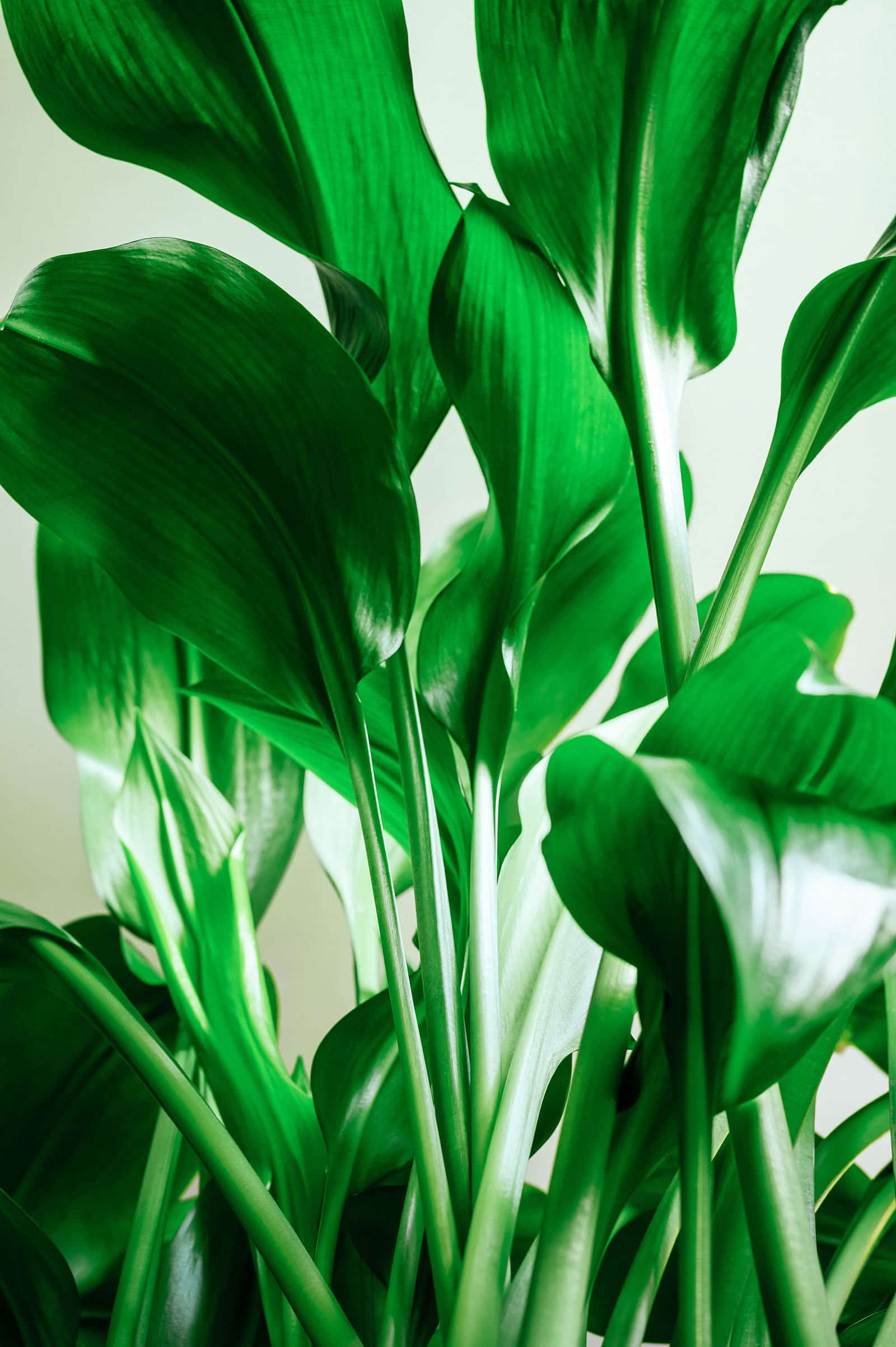
Propagating a cast iron plant
As a rule of thumb, with rhizomatous plants whose leaves grow directly from the soil (like cast iron plants, or something like a prayer plant), the best way to propagate them is generally through division. Leaf and stem propagation doesn’t always work on them, and if it does, it’s often a bit of a hassle.
Dividing an Aspidistra is a breeze. It’s best to do so when you were going to repot anyway, particularly in spring.
Here’s how you do it:
- Carefully take your cast iron plant out of its current planter. Gently shake the root ball over some newspaper or a garbage bag in order to remove excess soil.
- Sometimes, pieces of the plant will start to come apart by themselves at this point. Put aside as many sections as you want.
- Place the largest section back in the old planter with some fresh soil.
- Place the new pieces in (a) new planter(s), also with fresh soil.
- Water a little more sparingly for the next few weeks, especially if your new plants look a little sulky (which is not abnormal, you just performed a rather invasive operation on them).
- Because each piece of plant should have its own small root system already, it won’t take long for it to establish. You’ll know your division attempt was a success if you see new leaves appear.
And there you have it. Now you’ve got the old plant, plus one or more new ones. Will you keep them, or give them away?!
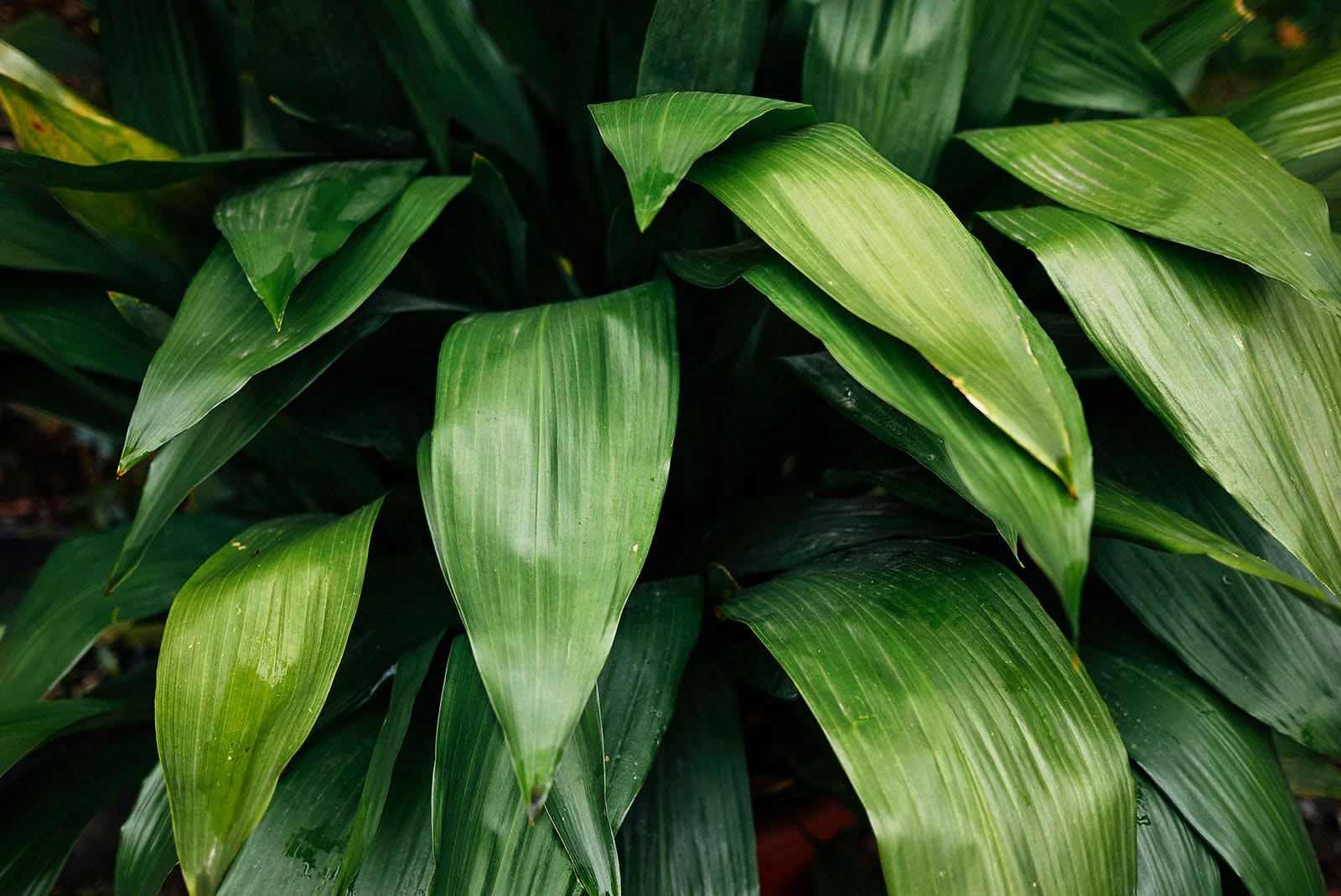
Frequently asked questions
Sources:
- Conran, J. G., & Bradbury, J. H. (2007). Aspidistras, amphipods and Oz: Niche opportunism between strangers in a strange land. Plant Species Biology, 22(1), 41-48.
- Suetsugu, K., & Sueyoshi, M. (2018). Subterranean flowers of Aspidistra elatior are mainly pollinated by not terrestrial amphipods but fungus gnats. Ecology, 99(1), 244-246.


